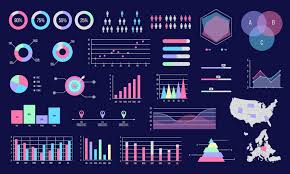
Meta’s Ambitious Plan: Fully Automating Ad Creation with AI by 2026
Meta AI ad automation is set to revolutionize digital advertising. As AI in digital advertising accelerates, Meta’s new strategy leads the charge. By 2026, Meta plans to let brands provide only a product image and budget — then AI will generate the ad creative (images, videos, and copy) and manage audience targeting. Industry data suggests nearly one-third of advertisers already use AI tools for content creation, signaling that Meta’s move aligns with a broader industry trend. This article explores Meta’s vision, current tools, and the implications for advertisers.
The Vision: What Meta Plans to Achieve
Meta’s goal is a fully automated ad creation pipeline. The vision is to enable brands to build and target complete ad campaigns using AI by the end of 2026. This “plug-and-play” approach would let small businesses upload a product image and budget, and Meta’s AI would generate visuals, video scripts, and targeting strategies in real time. A key part of this plan is real-time personalization—ads will dynamically adapt based on user context, such as location or behavior. The focus on scale, speed, and performance means that campaigns will continuously refine themselves to deliver optimal results.
How Meta’s AI Ad Creation Will Work
Meta’s ad automation integrates generative AI, predictive modeling, and real-time performance optimization:
- Content Generation: Meta’s AI will create ad creatives from scratch. Brands supply a product image or brief, and the AI generates imagery, short videos, dynamic backgrounds, and ad copy. Tools like Advantage+ Creative already offer text variation, image expansion, and auto-formatting for different placements.
- Audience Targeting: Predictive models determine the most relevant audience. Meta’s machine learning algorithms assess user behavior and preferences, adjusting delivery dynamically to enhance engagement.
- Performance Optimization: Real-time testing and adaptive learning will refine ad performance continuously. Advertisers using Advantage+ Creative have reported a 22% increase in return on ad spend and a 7% boost in conversions through AI-driven creative and targeting.
Current Tools Laying the Groundwork
Meta is already laying the foundation for full AI-powered ads with several key tools:
- Advantage+ Campaigns: These AI-driven campaigns automate audience targeting, budget allocation, and ad placements, streamlining the entire process.
- AI Sandbox: Meta is testing generative ad tools in a closed beta, including automatic text generation and image variations to improve creative performance before broader rollout in Ads Manager.
- Machine Learning Frameworks in Ads Manager: Meta’s Ads Manager leverages advanced ML frameworks like Andromeda to enhance targeting accuracy and engagement.
- Generative Creator Tools: Meta is introducing features such as automated image resizing, background generation, and AI-generated copy, enabling advertisers to produce automated ad creatives more efficiently.
Benefits for Advertisers
The benefits of Meta AI ad automation are substantial:
- Efficiency and Cost Reduction: Automating creative and targeting processes means faster campaign launches and reduced manual effort. Small businesses can run ads without hiring design teams, while large brands scale efficiently.
- Hyper-Personalization: AI enables real-time personalization at scale. Audiences receive custom ad variations based on location, behavior, or demographics—boosting relevance and click-through rates.
- Strategic Focus: With AI handling repetitive tasks, marketers can focus on strategic planning, brand positioning, and high-level creative direction.
Concerns and Challenges
Despite the advantages, there are valid concerns with fully automated advertising:



- Data Privacy and Consent: AI-driven personalization depends on data. Ensuring compliance with privacy laws (like GDPR or CCPA) will be essential to avoid backlash or penalties.
- Loss of Human Creativity: Over-reliance on AI may dilute brand voice or lead to generic creatives. Human oversight will remain essential to maintain unique messaging and emotional resonance.
- Algorithmic Bias and Transparency: AI models can unintentionally amplify biases. Limited visibility into how algorithms work can make it difficult to spot issues in targeting or delivery.
Industry Reactions and Implications
Reactions from advertisers, marketers, and agencies are mixed:
- Adopter Enthusiasm: Many brands, especially smaller businesses, are excited about the time and cost savings. They welcome the efficiency Meta AI ad automation promises.
- Agency Disruption: Traditional ad agencies view this shift as a threat. Some have seen their stock prices drop following Meta’s announcements. To stay relevant, agencies must adapt by integrating AI tools into their services.
- Competitive Landscape: Meta is not alone—Google Ads is also rolling out generative features in Performance Max, and TikTok has launched Smart+, its own AI-driven ad platform. Other players like Snapchat, Pinterest, and Reddit are also investing in AI tools for advertisers.
What This Means for the Future of Advertising
Looking ahead, Meta’s plan signals profound changes in the industry:
- Zero-Touch Campaigns: Businesses may soon launch full campaigns with minimal input. AI will handle design, copy, and delivery, adapting ads in real time for maximum effectiveness.
- Redefined Roles: Marketing professionals will need new skills—like AI tool management, data interpretation, and ethical oversight. Expect roles to shift from execution to strategic orchestration.
- AI-Driven Innovation: The long-term trend suggests even greater AI integration, including dynamic video, AR ads, and real-time customer interaction powered by generative models.
Conclusion
Meta’s plan to achieve full Meta AI ad automation by 2026 represents a bold leap in digital advertising. The promise of hyper-efficient, personalized, and scalable campaigns is attractive, especially for brands seeking to do more with less. Still, it raises critical concerns around creativity, control, and data ethics.
As the landscape evolves, marketers must find the balance between embracing automation and preserving human insight.Would you trust AI with your ad strategy?
https://hereandnowai.com/roi-of-ai-chatbots/
Stay connected with us on HERE AND NOW AI & on

